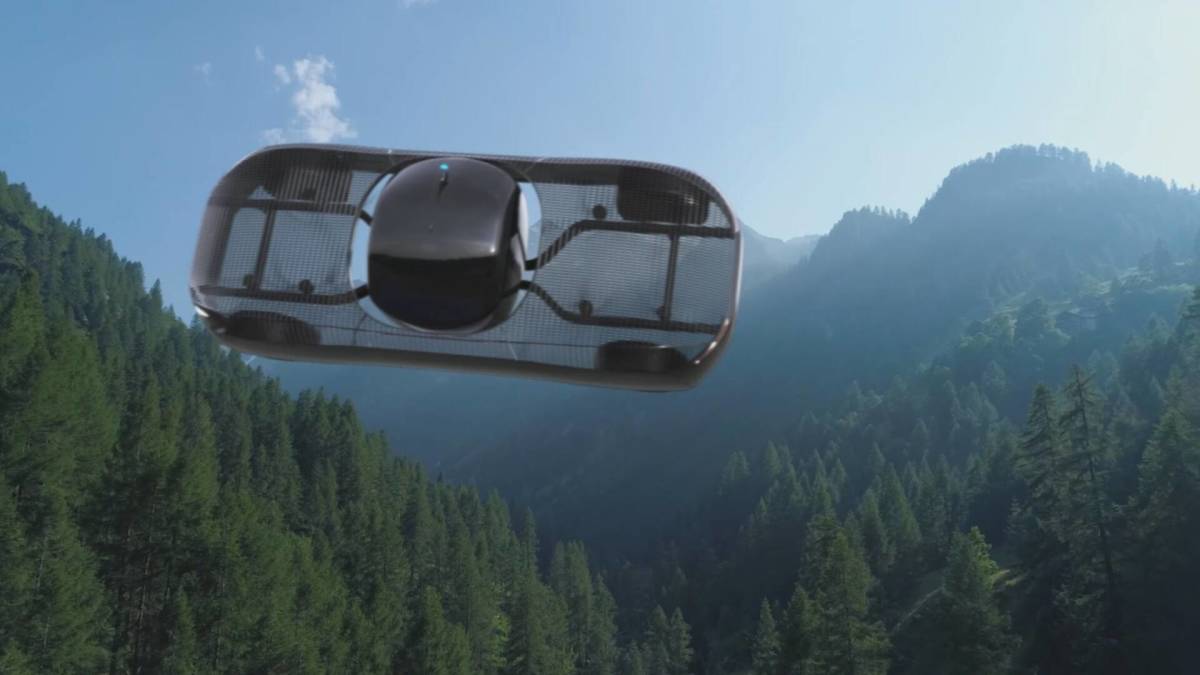
It was the talk of Motor City.
Detroit has been known as the home for the American auto industry ever since a guy named Henry Ford started the company that bears his name in the Michigan metropolis in 1903.
Related: Amazon investment aims to close AI gap with Google, Microsoft
The automobile has changed radically over the last century and now things in Motown are looking up--literally.
Alef Aeronautics, a California-based start-up, unveiled its Model A prototype at the Detroit Auto Show to what were described as "unusually large crowds."
"Designed to drive on the street, take off vertically when needed and fly overhead above traffic, we’re building the solution to the issues of modern congestion," the company said on its website.
The concept showcased the Model A’s exterior design, it did not drive, fly, or open to show the passenger cabin.
“It’s still not the final consumer version,” Alef founder and CEO Jim Dukhovny told Robb Report. “But at this point, it’s pretty close.”
Designed to fit in a garage
The Model A, which originated in 2015 as a sketch on a napkin, has a blue underbody that encases its four tires, each with an individual motor for the flying-car’s drive mode.
A silver, lightweight carbon-fiber mesh overlays its eight propellers, each with an independent, software-controlled electric propulsion system to spin at different speeds for redundancy and control.
The vehicle measures about 17 feet long, seven feet wide and six feet high – similar to the dimensions of an SUV—designed to fit in any parking space or garage.
The Model A, which is expected to sell for about $300,000, has two propellers in the front and back of the car which will enable it to execute vertical takeoff and landing.
The electric-powered vehicle should have a driving range of around 200 miles and a flight range of roughly 100 miles, the company said.
The Federal Aviation Administration issued Alef Aeronautics a special airworthiness certificate, allowing for limited purposes that include exhibition, research and development.
Flying cars have long been the subject of science fiction and fantasy films. The idea of soaring over rush hour traffic is doubtlessly appealing to beleaguered commuters who are sick of the bumper-to-bumper experience.
But at least one analyst thinks that the reality will be a little different.
Crowded skies
"One thing to keep in mind is that urban air mobility will not solve congestion," Byron Thurber, an associate principal with the design firm Arup, told the BBC in July. "In reality, we're not likely to see the volume of vehicles in the sky anywhere near the volume of cars on the ground – and if we did, then there would be traffic in the sky."
There are a good number of companies looking to get their piece of the sky, including the Pal V Liberty, Samson Switchblade, Aska A5, Klein Vision AirCar, and Doroni H1.
Last year, Tesla (TSLA) -) CEO Elon Musk revealed a Tesla flying vehicle, but the company has not began marketing or selling such a vehicle.
In addition, Swedish company Jetson — which took its name from the 1960's cartoon that featured flying vehicles — released its first flying vehicle, an electric vertical takeoff and landing vehicle or eVTOL, that it said would sell for $98,000.
The vehicle is described as an aluminum and carbon-fiber aircraft powered by eight electric motors, with a top speed of about 63 mph (101 kph), and a flight time of about 20 minutes. Licenses are not required to fly the aircraft in the US, the company said.
Tesla's Chinese rival Xpeng's (XPEV) -) flying car unit Xpeng Aeroht received a special flight permit in China for its two-seater X2 flying EV, the first in China to apply and receive such a permit.
- Get exclusive access to portfolio managers and their proven investing strategies with Real Money Pro. Get started now.







